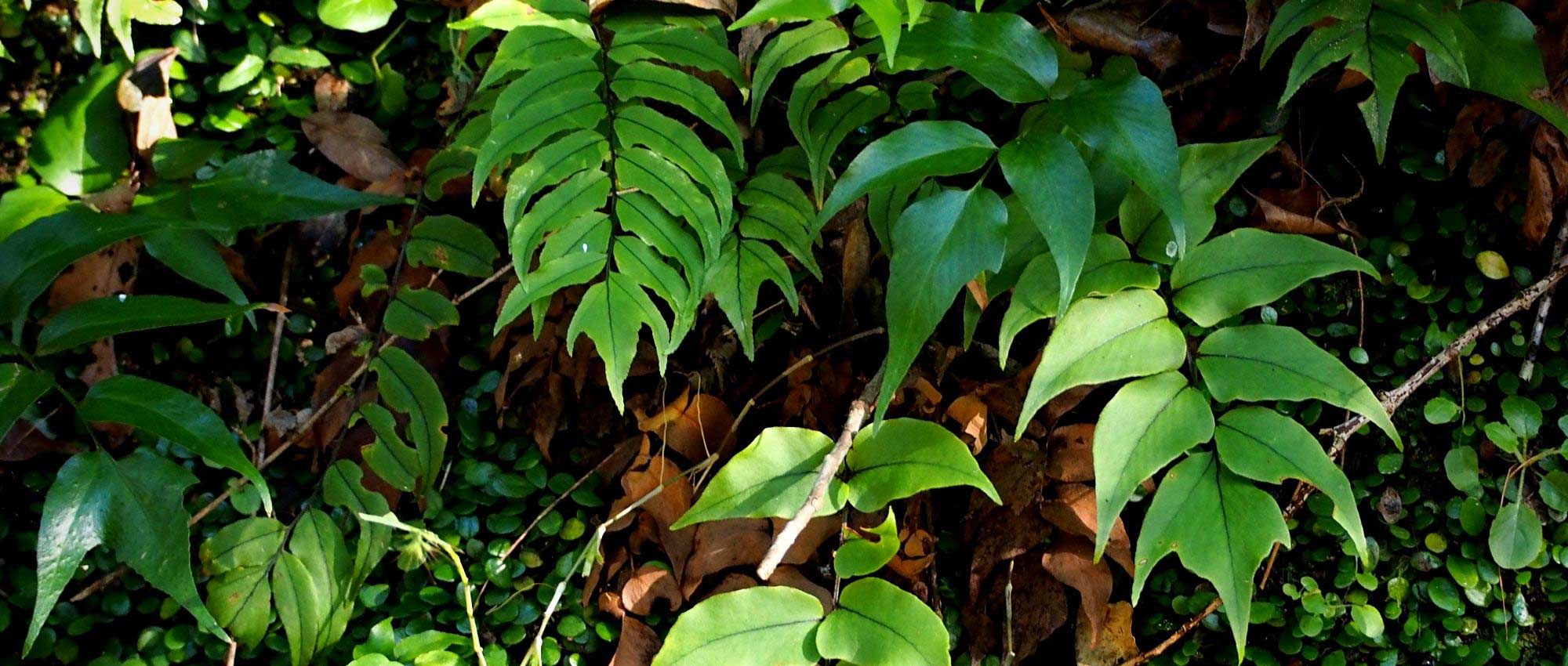
Cyrtomium: planting, growing, and caring for
Contents
Cyrtomium in a nutshell
- Cyrtomium is an uncommon fern, with dark green and glossy fronds
- Its fronds are generally evergreen
- They are unique, with false-shaped pinnules, resembling the foliage of Mahonia
- Cyrtomium thrives in shade, in woodland or shaded rockeries
- It is a low-maintenance plant and easy to grow!
A word from our Expert
Cyrtomium are stunning ferns that form beautiful spreading clumps, consisting of arching, widely spreading fronds. These are large, dark green, often glossy. They are distinctive, divided into oblique pinnules, broad at the base and tapering to the tip. The most well-known species are Cyrtomium falcatum and Cyrtomium fortunei, which can also be found in the wild in France. There are also a few varieties that stand out due to the colour of their fronds or the shape of their pinnules. Cyrtomiums are semi-evergreen ferns: they retain their fronds in winter in regions with a mild climate, where the risk of frost is low. They typically reach 60 cm in height and spread, sometimes 80 cm when they are happy.
In the garden, Cyrtomium thrive in shade or partial shade, sheltered from direct sunlight, in cool, humus-bearing soil. They also integrate very well into shaded rockeries! They require very little maintenance; it is mainly important to water them in the weeks following planting and to tidy the clumps in early spring by cutting back damaged fronds. They can be multiplied by dividing the clumps or by sowing spores. Cyrtomiums easily find their place in woodland gardens, as well as in small city gardens with a graphic style, alongside Hakonechloa macra, hostas, horsetails, and Japanese maples.
Discover in this guide all our tips for successfully cultivating Cyrtomium: where to plant them, how to care for them and multiply them, and which plants to associate them with!
Botany
Botanical data
- Latin name Cyrtomium sp.
- Family Dryopteridaceae
- Common name Cyrtomium, Holly fern, Aspidie
- Flowering None
- Height between 50 and 80 cm
- Exposure shade or partial shade
- Soil type humus-bearing, cool, well-drained
- Hardiness between –10 and –20 °C
Cyrtomium comprises nearly 40 species of ferns primarily native to Southeast Asia. They are found in China, Japan, Korea, Thailand, and Vietnam. They naturally grow in woodlands and rocky environments, such as on stone walls. In cultivation, the most common species in French gardens are Cyrtomium falcatum and Cyrtomium fortunei, and occasionally Cyrtomium macrophyllum. Both Cyrtomium falcatum and fortunei have even escaped gardens and are naturalised in some regions with a mild climate. Cyrtomium falcatum has naturalised along the Atlantic coast, particularly in the Basque Country and Brittany, where it is often found on old stone walls. Cyrtomium fortunei, on the other hand, is mainly found in the Maritime Alps, in the sheltered valleys of the Nice region.
Cyrtomium belongs to the Dryopteridaceae family, like Dryopteris and Polystichum, as well as many tropical ferns. The Cyrtomium is very closely related to Polystichum, and is sometimes grouped under the same genus name (Polystichum falcatum is a synonym of Cyrtomium falcatum).
The name Cyrtomium comes from the Greek kurtos, meaning “curved”, referring to the shape of the pinnules. Falcatum means “sickle-shaped”, also describing the shape of the pinnules. Fortunei honours the botanist explorer Robert Fortune.
Cyrtomium falcatum is also cultivated as a houseplant. However, Cyrtomium are quite hardy ferns that can easily be planted outdoors! C. falcatum tolerates temperatures between –10 and –15 °C, while C. fortunei is even more cold-resistant, capable of withstanding –25 °C!
Cyrtomium can grow up to 50-60 cm in height and up to 70 cm in spread, becoming increasingly bushy over the years. They form spreading clumps, with fronds that are not upright but rather spreading or arching, more or less horizontal. These develop from a short erect rootstock covered in brown scales.
Cyrtomium have very different fronds from most ferns. They are once-divided and have 7 to 20 pairs of pointed, sickle-shaped pinnules. This gives them the nickname Aspidie en Faux and the species name falcatum. The fronds measure between 30 and 80 cm in length and are light green when young, turning dark green later. They resemble the leaves of Mahonia and somewhat resemble those of holly, hence the nickname Holly fern. The pinnules are spaced apart, independent of each other. They are shiny, glossy on the upper side of the lamina, and are arranged alternately on the rachis (central axis).

Young frond of Cyrtomium falcatum, curled in crozier (photo harum.koh), Cyrtomium falcatum ‘Rochfordianum’ (photo David J. Stang) and Cyrtomium fortunei var. clivicola
Cyrtomium fortunei and falcatum look similar, but the former has a rather dull lamina and is smaller, while C. falcatum has very shiny fronds, with the lamina appearing almost waxy. The variety Cyrtomium fortunei var. clivicola is also appreciated for its lighter, yellow-green fronds!
The fronds of Cyrtomium are generally evergreen, but they may disappear when temperatures drop below –5 °C. Don’t worry if you see your Cyrtomiums losing their fronds; they will regrow from the stump in spring, producing new fronds.
Like other ferns, Cyrtomium reproduces by spores, and therefore does not produce flowers or seeds. It produces fertile fronds in spring or summer. On the underside of these, you can see sori: clusters of sporangia, small sacs that open at maturity to release spores. The sori are round and regularly arranged on the underside of the fronds, covering the entire surface of the lamina. They are protected by an indusium (a small membrane covering them). It is possible to collect the spores when they are mature for sowing! However, this is a delicate technique that requires time and specific conditions (humid and sterile environment).

The sori located on the underside of the fronds of Cyrtomium falcatum (photos: manuel m. v. / Brisbane City Council). These are circular clusters of sporangia, small sacs that open at maturity to release spores. They are covered by a white membrane (indusium)
Read also
Ferns: growing and plantingThe main varieties of Cyrtomium
The most popular varieties
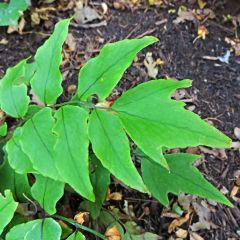
Cyrtomium fortunei - Evergreen fern
- Height at maturity 50 cm
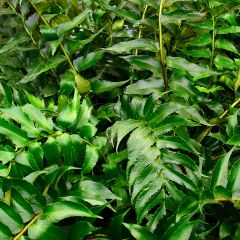
Cyrtomium falcatum
- Height at maturity 60 cm
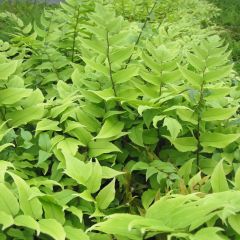
Cyrtomium fortunei var. clivicola
- Height at maturity 50 cm
Discover other Cyrtomium
View all →Available in 2 sizes
Available in 2 sizes
Available in 2 sizes
Available in 1 sizes
Available in 1 sizes
Planting
Where to Plant?
The ideal location for planting Cyrtomium is a shaded yet bright spot. Avoid direct sunlight, which could scorch the foliage. Choose a place sheltered from cold winds, especially for Cyrtomium falcatum. This will increase the chances of it retaining its foliage in winter. C. fortunei, on the other hand, is slightly more cold-resistant. Plant in a cool, humus-bearing soil, but ensure it is well-drained, avoiding waterlogged conditions in winter. Cyrtomium accept acidic or calcareous soils, showing indifference to soil pH.
Cyrtomiums easily fit into the composition of a woodland garden. You can also place them in a cool, shaded rockery, or even between the stones of a shaded wall, as they are often found in rocky environments or on walls in nature. Cyrtomiums are also beautiful ferns to install in a courtyard or patio, alongside Japanese maples, Athyrium niponicum, Ophiopogons, and grasses like Hakonechloa. This type of location will protect them from winds and cold.
In the coldest regions, cultivate Cyrtomium fortunei rather than Cyrtomium falcatum, as it is more cold-resistant (withstanding -20 to -25 °C). Also, remember that Cyrtomium falcatum adapts easily to indoor cultivation. If you can’t find a spot in the garden, you can simply grow it in a pot in your home!
When to Plant?
We recommend planting Cyrtomium in spring, around May. If you live in a region with a mild climate, not prone to frost, you can plant in autumn.
How to Plant?
- Start by placing the root ball in a basin of water to rehydrate it. This will facilitate recovery and subsequent watering.
- Next, dig a planting hole measuring two to three times the size of the root ball.
- We recommend adding some well-decomposed compost to enrich the soil.
- Remove the Cyrtomium from its pot and plant it. Ensure that the collar or top of the root ball is not buried. It should be at the same level as when the plant was in the pot.
- Replace the soil all around and firm it down with the palm of your hand.
- Water generously.
- Then, apply an organic mulch around the Cyrtomium, using dead leaves or RCW.
You can also plant it in a pot, using a mix of garden soil, well-decomposed compost, heather soil, and coarse sand.
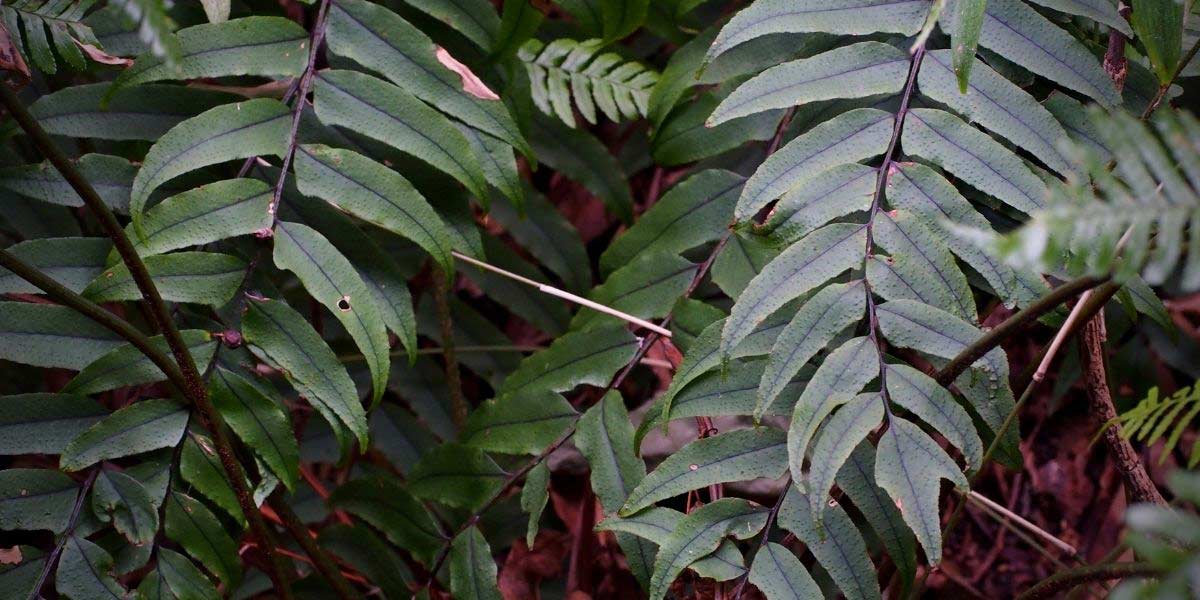
Cyrtomium fortunei (photo harum.koh)
Read also
Ferns: how to choose them?Entretien
Cyrtomium requires very little maintenance. However, to help it establish well, we recommend regular watering in the weeks following planting to facilitate recovery. Once established, Cyrtomiums tolerate drought.
We also advise installing an organic mulch around your Cyrtomiums, such as a layer of fallen leaves or RCW (ramial chipped wood), at least 10 cm thick. This helps to keep the soil cool for longer. Additionally, applying a thick mulch around the clump in autumn will protect it from the cold. This precaution is especially important for Cyrtomium falcatum.
We recommend cleaning the clumps in spring by cutting back dry or damaged fronds. Similarly, if the Cyrtomium has lost its foliage during winter, cut away the dead fronds.
Like other ferns, Cyrtomium is not susceptible to diseases or pests.
If you are growing Cyrtomium in a pot, it will require regular watering (even more so if indoors!) as the substrate dries out faster than in the ground.
Multiplication
Cyrtomium can be multiplied by division of clumps or by sowing spores. We recommend division, as sowing is more delicate to succeed and takes longer to produce new plants.
Sowing spores
Cyrtomium produces fertile fronds typically in summer (sometimes in spring). You can spot small round clusters on the underside of the fronds, which contain the spores. When they are mature, they detach from the frond and form a very fine dust. You can cut a section of frond, place it in a bag or paper envelope, allowing the spores to fall into the envelope, which you can then collect. We recommend sowing spores from the current year, as they are more likely to germinate.
The best time to sow them is late summer, around September.
- Take a clear plastic or glass container, a Tupperware is perfect.
- Place a light substrate, such as a mix of potting soil and coarse sand, and then moisten it.
- Microwave the Tupperware for 10 minutes to sterilise the substrate. This will prevent the development of mosses or fungi.
- Lightly compact it.
- Once the substrate has cooled, gently scatter the spores on the surface evenly. They should remain on the surface; do not cover them!
- Place a clear lid or plastic wrap over the Tupperware. This helps maintain a sterile and humid atmosphere.
- Then place your sowing in a sheltered spot, in a bright area but out of direct sunlight, ideally at a temperature of around 16 °C.
To learn more, check out our sheet “How to sow fern spores?”
Division of clumps
The best time to divide Cyrtomium clumps is in spring.
- Choose a well-developed clump of Cyrtomium that has been in place for several years.
- Carefully dig it up, making sure to dig wide enough not to damage the rootstock.
- Take a section of rootstock with roots and a few fronds.
- Replant immediately, either in a pot or in the ground at a new location.
- Water generously to encourage establishment.
Association
Cyrtomium easily finds its place in a cool, shaded rockery. You can plant alongside it saxifrages (notably Saxifraga umbrosa ‘Variegata’), Tiarella, Ajuga reptans, as well as other ferns, such as hart’s-tongue and Blechnum spicant. Add grasses like Hakonechloa macra or Carex morrowii for the lightness and graphic quality of their foliage. Also discover the delicate flowering of Epimediums, charmingly nicknamed Elf Flowers!
Check out our advice sheet: “10 plants to create a shady rockery”
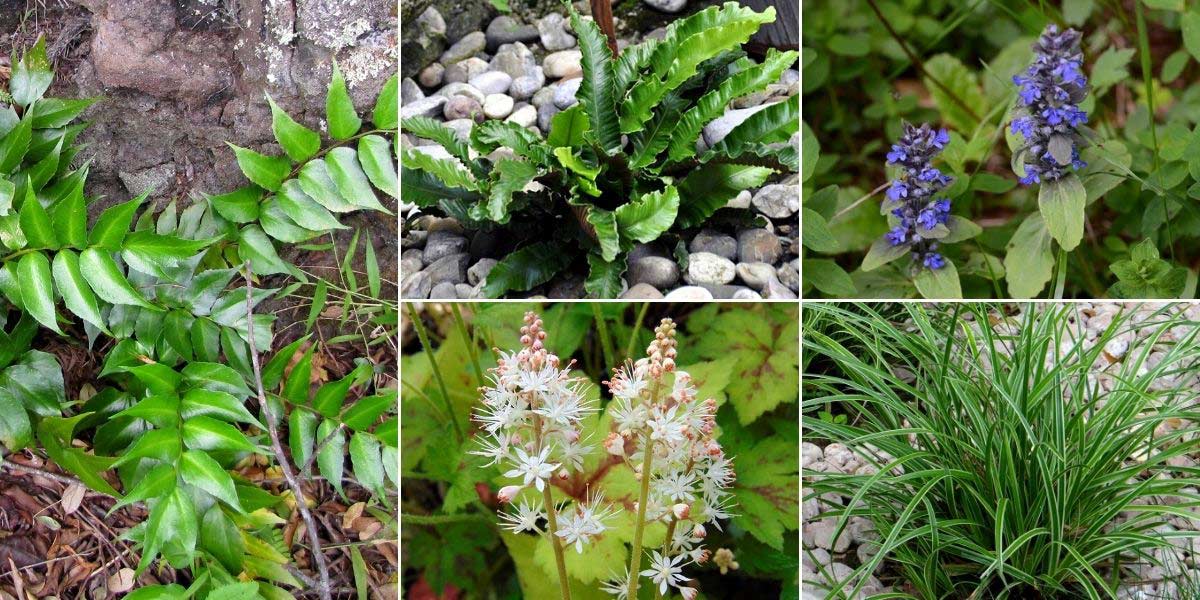
You can integrate Cyrtomium into a shaded rockery. Cyrtomium falcatum (photo Forest and Kim Starr), Asplenium scolopendrium, Ajuga reptans (photo Radio Tonreg), Tiarella ‘Running Tiger’ and Carex morrowii ‘Ice Dance’
You can also simply install Cyrtomium in woodland, alongside Solomon’s Seal, Hostas, Chaerophyllum hirsutum… Also discover Tricyrtis and Dodecatheon meadia, two less common plants that offer lovely flowers. Finally, as its fronds are broad, shiny, and thick, don’t hesitate to pair Cyrtomium with plants that have finer and lighter foliage, such as Thalictrum, columbines, and grasses. This will lighten the planting! You can also add beautiful touches of colour with the tiered flowering of Asian primroses, for example Primula bulleyana.
Cyrtomium will also find its place in a courtyard or patio, which will provide a sheltered spot, protected from cold winds. You can thus design a very beautiful graphic garden, suitable for small spaces. Integrate alongside Cyrtomium some grasses, Ophiopogon planiscapus, hostas (for example, the lovely variety ‘Blue Mouse Ears’)… Not to mention some horsetails and bamboos, for the verticality they bring. For flowering, choose preferably plants with subtle shades (white, purple, black…).
Useful resources
- Discover our range of Cyrtomium!
- Our extensive range of ferns, as well as the associated advice sheets
- Subscribe!
- Contents
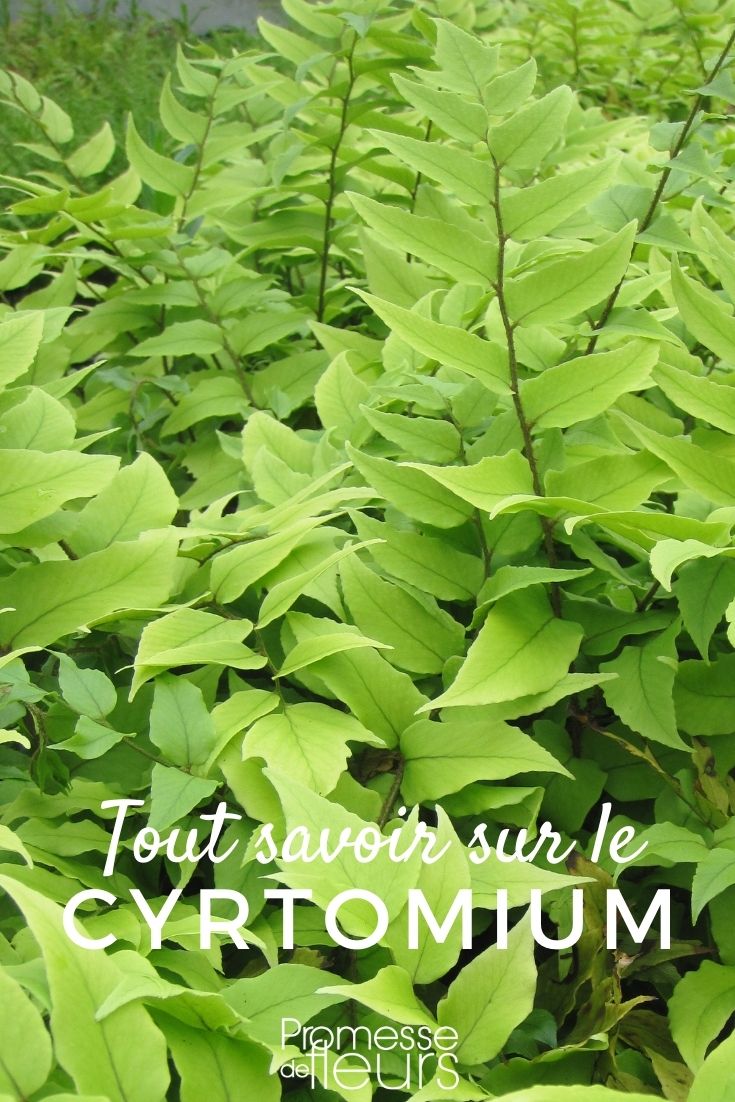



































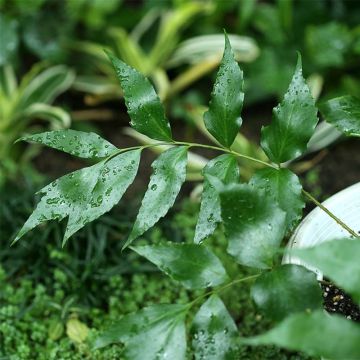
Comments